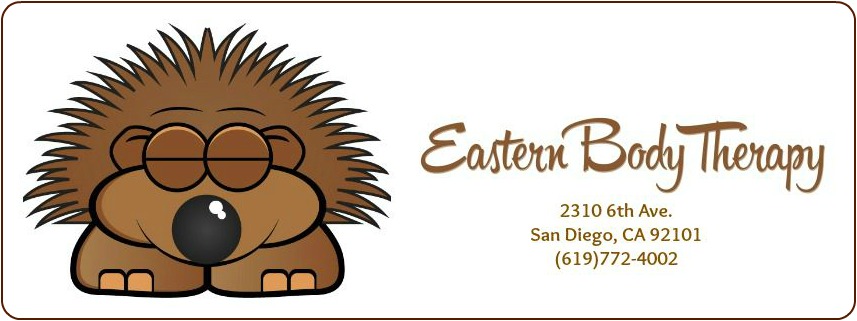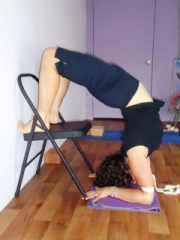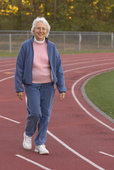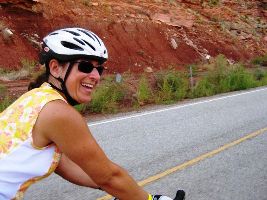 |
||
|
||||||||||
| About Us | ||||||||||
|
||||||||||
| Schedule Appointment | ||||||||||
| Help For Your Health | ||||||||||
|
||||||||||
| Testimonials/Success Stories | ||||||||||
| Our Blog | ||||||||||
 Yelp About Us Yelp About Us |
||||||||||
| Newsletter Archives | ||||||||||
| Resources and Links | ||||||||||
| FAQs | ||||||||||
| Home |
Exercise - How Much is Enough?
Lisa's Story | The CDC Says... | How Do I Do It? | You CAN Do It! | References | Spring comes early here in San Diego, and as bathing suit season approaches we all want to get back into shape after our winter indulgences. The question is, how much exercise do we really need, and what it the best way to get it? I did a 500 mile tour of the Missouri River Valley in 2009, rode my first century (100 miles) in 2010, and my first double century in 2011. In fact, I rode 10 centuries in 2011. My goal for 2012 is to complete the California Triple Crown (three double centuries in a calendar year), and I am considering being part of a relay team for a 500 mile race in the fall.
At 47 years old my blood pressure, blood sugar, and cholesterol levels are normal without medication. I still wear the same size dress I wore when I was married 11 years ago. My mood is better when I am exercising regularly, and I handle daily stresses much more calmly than I did before biking – important for a woman who is experiencing the beginnings of hormone fluctuations and neurotransmitter fluctuations while working with people every day. My level of exercise is extreme, and I recognize that not everyone is willing or able to make the lifestyle choices which allow for this type of training. SO, how much exercise is enough? back to top The CDC Says: According to the CDC (Center for Disease Control), adults between the ages of 17-64 need a minimum of 150 minutes of moderate intensity physical activity, or 75 minutes of vigorous intensity physical activity per week in order to maintain a basic level of fitness. The duration of activity in any one session is irrelevant – you get just as much benefit from fifteen ten minute sessions of exercise per week as you get from five thirty minute sessions. Moderate intensity exercise includes activities such as brisk walking, gentle bicycling, pushing a lawn mower, or playing tennis. You breathe a little harder than usual, break a sweat, and can have a conversation, but probably can’t sing while you are doing it. Vigorous intensity physical activity includes swimming hard, fast cycling, running, high impact aerobics, and other activities where your heart rate increases, you breathe hard, and it is difficult to carry on a conversation while you are doing the activity.  In addition to this aerobic activity, muscle strengthening should be done at least twice per week. This may include weight lifting, heavy gardening, working with resistance bands, or even yoga. Each major area of the body should be exercised, with eight to twelve repetitions per area. Body areas include legs, hips, back, chest, stomach, shoulders, and arms. In addition to this aerobic activity, muscle strengthening should be done at least twice per week. This may include weight lifting, heavy gardening, working with resistance bands, or even yoga. Each major area of the body should be exercised, with eight to twelve repetitions per area. Body areas include legs, hips, back, chest, stomach, shoulders, and arms. If weight loss is your goal, you will need to do about 25% more than this. In addition to exercise, you will need to reduce your total calorie intake by about 200 calories per day. You will then consume fewer calories while buring more calories - the ticket to weight loss. Training for athletic events is a whole other ballgame, and will vary considerably depending on the event. Training for a five kilometer run is very different from training for a marathon. Training for a triathelon requires conditioning your body for three different sports, which is quite different from training for a century bike ride. There are a variety of athletic clubs which can provide training guidelines and support for these kinds of events. For example, Team in Training has a fabulous program with coaching, support, and all expenses paid to the location of the event you train for. back to top How Do I Do It??? 1) Start out slowly. Most people can’t go 50 miles the first day on a bike, but nearly anyone who can balance on a bike can go two miles. If you are starting from the sofa, plan to get out and walk, ride, swim, or whatever you choose for 15 minutes. Next time, go for 17 minutes; then 20 minutes. Once you have worked up to 30 minutes, you can choose to increase the intensity or keep on increasing the amount of time. For example, I am NOT a runner, but I walk regularly. If I want to run, I plan to go out for 30 minutes. I bring a stop watch, and I jog for 30 seconds, and then walk briskly for 45 seconds, then repeat for the 30 minutes. The last time I tried to become a runner, I worked  my way up to running for 45 seconds and walking for 30 seconds before I got too bored and went back to my bike.
Which brings us to point number two... my way up to running for 45 seconds and walking for 30 seconds before I got too bored and went back to my bike.
Which brings us to point number two... 2) Pick something you enjoy. If you hate your workout, you will not want to do it and your attitude will affect the benefit you get. It should not cause you more stress to get up and get out than you will be managing by exercising. While cross training can be a good idea, don't start with running if you hate running. I actually look forward to most of my bike rides, and I love the yoga I do on the days I'm not riding. When it is no longer fun it may be time to find something else. 3) Have a partner. Your partner should be a special, irritating, but loveable person who will hold you accountable for showing up and working out, and whine profusely if you do not. This should be someone you like enough to see several times per week, but probably should not be your spouse or lover! If you don't have a workout buddy, consider hiring a personal trainer until you have developed the habit enough to continue on your own. 4) Have a schedule. If you put your workouts onto your calendar as appointments, it will be harder to schedule yourself through the time you've alotted for exercise (especially if you are meeting someone else, see #3!) and you will be more likely to actually do it. If you've paid for spin classes, a gym membership, martial arts classes, or a personal trainer's time, it is harder to skip out on workouts because you know there is a penalty in your wallet. back to top You CAN do it! Not everyone aspires to be an athlete, but anyone can maintain a basic level of fitness. You may surprise yourself with just how strong you can get with consistent and persistent exercise. After four years of long distance cycling, that infamous Torrey Pines hill is no longer hard. It now takes me 15 minutes to get up it. I no longer feel as if I am going to die, and I no longer fear the experience. Bigger hills like the ride to Julian or up Palomar Mountain are attainable if I take my time, breathe, and just keep peddling.  One step at a time, one barbell at a time, one swim stroke or pedal or downward facing dog at a time, even the most dedicated couch potato can find the benefits of routine exercise. Even tiny steps can help – park at the back of the parking lot instead of looking for the closest space to the door. Take the stairs instead of the elevator if you are only going a floor or two up. Use a hand basket at the grocery store instead of a cart. Chop vegetables by hand instead of in the food processor. Each of these small changes moves you further along the path to better fitness, bringing better blood pressure, improved mood, better sleep, and a healthier immune system.
back to top One step at a time, one barbell at a time, one swim stroke or pedal or downward facing dog at a time, even the most dedicated couch potato can find the benefits of routine exercise. Even tiny steps can help – park at the back of the parking lot instead of looking for the closest space to the door. Take the stairs instead of the elevator if you are only going a floor or two up. Use a hand basket at the grocery store instead of a cart. Chop vegetables by hand instead of in the food processor. Each of these small changes moves you further along the path to better fitness, bringing better blood pressure, improved mood, better sleep, and a healthier immune system.
back to topReferences http://www.cdc.gov/physicalactivity/everyone/guidelines/adults.html Center for Disease Control and Prevention
|
*DISCLAIMER: Testamonials used on this site are real comments made by people who have worked with us. As with any medical treatment, we cannot guarantee results and individual experiences may vary.
Images of people on this site are used for illustrative purposes only. The models depicted should not be construed to endorse any products or services promoted on this site, nor should they be construed to have any healthcare issues discussed on this site.Copyright © 2001-2017 Eastern Body Therapy. All Rights Reserved.

 As many of you know, I am an ultra-distance cyclist. This means my weekend rides are often over 100 miles, and the events I train for are typically in the 200-500 mile range. I didn’t start at this level, and neither should you.
As many of you know, I am an ultra-distance cyclist. This means my weekend rides are often over 100 miles, and the events I train for are typically in the 200-500 mile range. I didn’t start at this level, and neither should you.